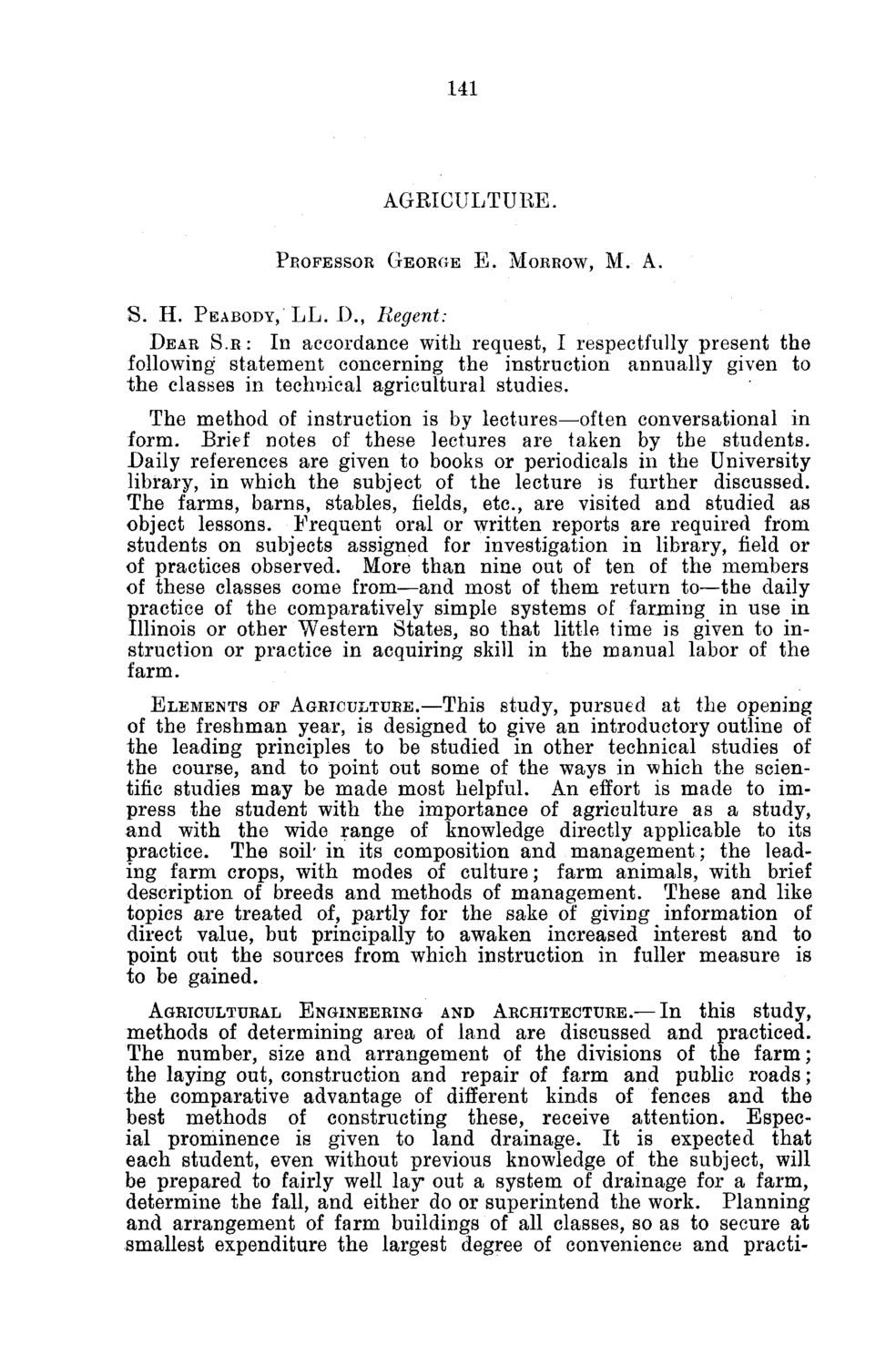| |
| |
Caption: Board of Trustees Minutes - 1886
This is a reduced-resolution page image for fast online browsing.

EXTRACTED TEXT FROM PAGE:
141 AGRICULTURE. PROFESSOR GEORGE E. MORROW, M. A. S. H. PEABODY, LL. D., Regent: DEAR S . R : In accordance with request, I respectfully present the following statement concerning the instruction annually given to the classes in technical agricultural studies. The method of instruction is by lectures—often conversational in form. Brief notes of these lectures are taken by the students. Daily references are given to books or periodicals in the University library, in which the subject of the lecture is further discussed. The farms, barns, stables, fields, etc., are visited and studied as object lessons. Frequent oral or written reports are required from students on subjects assigned for investigation in library, field or of practices observed. More than nine out of ten of the members of these classes come from—and most of them return to—the daily practice of the comparatively simple systems of fanning in use in Illinois or other Western States, so that little time is given to instruction or practice in acquiring skill in the manual labor of the farm. ELEMENTS OF AGRICULTURE.—This study, pursued at the opening of the freshman year, is designed to give an introductory outline of the leading principles to be studied in other technical studies of the course, and to point out some of the ways in which the scientific studies may be made most helpful. An effort is made to impress the student with the importance of agriculture as a study, and with the wide range of knowledge directly applicable to its practice. The soil' in its composition and management; the leading farm crops, with modes of culture; farm animals, with brief description of breeds and methods of management. These and like topics are treated of, partly for the sake of giving information of direct value, but principally to awaken increased interest and to point out the sources from which instruction in fuller measure is to be gained. AGRICULTURAL ENGINEERING AND ARCHITECTURE.— In this study, methods of determining area of land are discussed and practiced. The number, size and arrangement of the divisions of the farm; the laying out, construction and repair of farm and public roads; the comparative advantage of different kinds of fences and the best methods of constructing these, receive attention. Especial prominence is given to land drainage. It is expected that each student, even without previous knowledge of the subject, will be prepared to fairly well lay out a system of drainage for a farm, determine the fall, and either do or superintend the work. Planning and arrangement of farm buildings of all classes, so as to secure at smallest expenditure the largest degree of convenience and practi-
| |